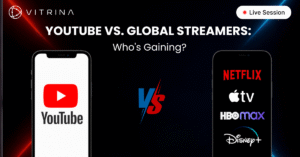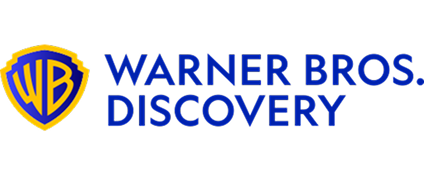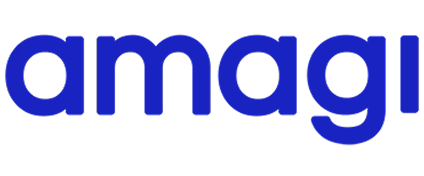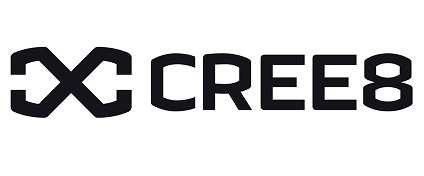How to Buy TV Content Rights: A Strategic Guide

Introduction
In my work as a content strategist, I’ve observed a fundamental truth: the health of an entertainment company’s content pipeline is directly tied to the efficiency of its acquisition process. Yet, for many M&E executives, the seemingly straightforward task of buying TV content rights is a fragmented, opaque, and inefficient ordeal.
My goal with this article is to demystify this process, providing a strategic framework that turns a fragmented workflow into a data-driven, repeatable success story. I will guide you through the critical phases of content acquisition, from initial strategy to final execution, and show how a global solution like Vitrina can solve the core pain points that have plagued this industry for decades.
Table of content
- The Strategic Imperative for Buying TV Content Rights
- How to Buy TV Content Rights: The Core Framework
- The Due Diligence Trap and How to Avoid It
- Mastering the Art of the Deal: Negotiation and Closing
- How Vitrina Helps Buy TV Content Rights
- Conclusion: A Final Thought on Buying TV Content Rights
- Frequently Asked Questions
Key Takeaways
| Core Challenge | Buying TV content rights is a complex process plagued by fragmented data, opaque deal-making, and a lack of market visibility. |
| Strategic Solution | A structured, data-driven approach is essential for identifying, vetting, and acquiring the right content efficiently. |
| Vitrina’s Role | Vitrina provides a centralized, global database of content, companies, and decision-makers to streamline the entire acquisition lifecycle. |
The Strategic Imperative for Buying TV Content Rights
The act of acquiring TV content rights is far more than a simple transaction; it’s a foundational pillar of your company’s long-term strategy. In an era of intense competition and audience fragmentation, your content library is your primary asset.
I’ve seen firsthand how a well-executed content acquisition strategy can differentiate a streaming service, strengthen a broadcast network’s programming slate, or empower a co-production studio to greenlight the next big hit.
However, the process is fraught with risk. The wrong deal can tie up capital in underperforming assets, while a missed opportunity can hand a market advantage directly to your competitors. The traditional workflow—relying on festival circuits, personal networks, and a patchwork of spreadsheets—is no longer sustainable.
It’s too slow, too prone to human error, and lacks the comprehensive market intelligence required to make confident, data-backed decisions. This is the core problem I aim to solve for you. The entire workflow, from initial discovery to final signature, needs to be re-engineered with precision and data at its core.
For example, a recent Omdia report found that worldwide online TV and video revenues are projected to grow to over $213 billion by 2026. This monumental market value underscores the immense pressure and opportunity in content acquisition. It’s a high-stakes environment where a strategic, and not a reactive, approach is non-negotiable.
How to Buy TV Content Rights: The Core Framework
As an executive, your focus should be on building a repeatable, scalable process, not on chasing individual deals. Based on my analysis and deep industry experience, the process of buying TV content rights can be broken down into four distinct, interdependent phases.
Phase 1: Strategic Discovery and Vetting
The first and most critical phase is shifting from a reactive “what’s available?” mindset to a proactive “what do we need?” strategy. This begins with a deep understanding of your audience, your platform’s content gaps, and the competitive landscape.
You must identify specific genres, formats, and even specific projects that align with your business goals. The key here is not just to find content, but to find the right content. This requires access to a vast, verified database of content, companies, and creators.
A recent study by Ampere Analysis noted a shift in content acquisition, with more companies prioritizing a “curated approach” to content over pure volume, especially in a crowded streaming market. This means you need a way to filter the noise and focus on projects with real potential.
Phase 2: Due Diligence and Rights Assessment
Once you’ve identified a target, the real work begins. This is where most acquisition workflows break down. Due diligence is not just about a title report; it’s about a comprehensive evaluation of the content itself, the people behind it, and the complex web of rights and ownership. You need to answer critical questions:
- Who are the actual rights holders? Is it a single distributor, a production company, or a complex consortium?
- What is the full chain of title, from script to screen?
- What specific rights are available? Are they exclusive or non-exclusive? Are they for a specific territory, platform (e.g., broadcast vs. streaming), or window?
- Is the content already tied up in other deals, such as with a co-production partner or a separate syndication agreement?
This is where fragmented, siloed data is a major liability. I’ve seen promising deals fall apart at this stage because critical information—like a producer’s verified contact details or a co-production partner’s involvement—was impossible to find.
The Due Diligence Trap and How to Avoid It
Many executives view due diligence as a necessary but painful legal step. I see it as a mission-critical opportunity to de-risk a potential investment. The “due diligence trap” is the assumption that a simple search is enough.
In the M&E supply chain, a project’s ownership and rights are often a tangled knot of agreements and collaborations. A failure to untangle this knot can result in legal challenges, financial losses, and significant damage to your reputation.
My advice is to implement a rigorous, standardized due diligence checklist. This checklist should go beyond a simple copyright check and delve into the intricate relationships behind the content.
For example, did you know that the average TV show has dozens of collaborators, from production companies to VFX houses to localization vendors?
Each one of these entities plays a role in the content supply chain, and understanding their involvement is key to a smooth acquisition process. Vitrina’s platform, with its ability to map the entire content supply chain—including all linked projects, companies, and executives—is designed specifically to address this complexity.
Mastering the Art of the Deal: Negotiation and Closing
The final phases—negotiation and closing—are where strategy meets execution. A successful negotiation is built on a foundation of solid research. When you approach a deal knowing the content’s full history, the distributor’s other projects, and the key executives’ backgrounds, you enter the room with a significant advantage.
This intelligence allows you to move beyond basic price discussions and craft creative, mutually beneficial deals. You can negotiate for specific rights, territories, and windows, all while understanding the seller’s broader strategic goals.
A recent Variety report highlighted that the shift to global licensing deals has become a significant factor in content negotiations, with buyers and sellers navigating new complexities around exclusivity and territorial rights.
My analysis suggests that the most successful deals are those that are customized, not templatized. The ability to identify the right partner and understand their full slate of projects is invaluable. Vitrina’s verified profiles and project tracker capabilities enable you to do exactly this, giving you the context you need to negotiate smarter, not harder.
How Vitrina Helps Buy TV Content Rights
My core message is this: you cannot afford to rely on outdated, manual processes to build a modern content library. The future of content acquisition is in a single, unified data source. Vitrina is that source.
Here is how the platform directly solves the pain points of buying TV content rights:
- Find a Project from Concept to Release: Our proprietary Film+TV Projects Tracker provides real-time updates on what’s in development, production, or post-production. You can see what your competitors are working on and uncover opportunities before they hit the market.
- Discover the Right Partner: Our database contains over 6,000 verified entertainment companies and over 3 million executives. You can find distributors, sales agents, and producers by region, genre, and track record.
- Access In-Depth Intelligence: Each company and project profile is a comprehensive dossier, linking key executives, collaborators, and a full slate of past and present projects. This provides the due diligence information you need to move quickly and confidently.
- Accelerate Your Workflow: By centralizing all the data you need—from contact details to project status—Vitrina cuts down the time spent on manual research from days to minutes.
Conclusion: A Final Thought on Buying TV Content Rights
Buying TV content rights is a strategic discipline, not a clerical task. The executives who master this discipline will be the ones who lead their companies to success in a highly competitive market.
This requires a shift from a fragmented, reactive approach to a single, unified, and data-driven workflow. By leveraging a comprehensive intelligence platform, you can simplify due diligence, uncover valuable opportunities, and make confident, data-backed deals.
I urge you to transform your content acquisition strategy and unlock the full potential of your content pipeline. SignUpToday!
Frequently Asked Questions
The primary types of TV content rights include broadcast rights (for traditional linear TV), streaming rights (for SVOD, AVOD, or FAST channels), theatrical rights (for a limited cinema release), and syndication rights (for re-runs).
Content rights pricing is highly variable and depends on factors such as the content’s popularity, the type of rights being licensed (e.g., exclusive vs. non-exclusive), the territory, and the duration of the license agreement. Market trends and audience data also play a crucial role in the valuation.
Ensuring legitimacy requires thorough due diligence, including a review of the “chain of title” to confirm copyright ownership. Using a verified, third-party database that maps the entire content supply chain can significantly reduce this risk and provide a clear picture of all linked companies and executives.
A co-production is a partnership between two or more production companies to create a piece of content. This arrangement can complicate content rights, as ownership may be split between the partners, often with each holding rights for specific territories or platforms. It requires careful negotiation and a clear understanding of the agreement.















































